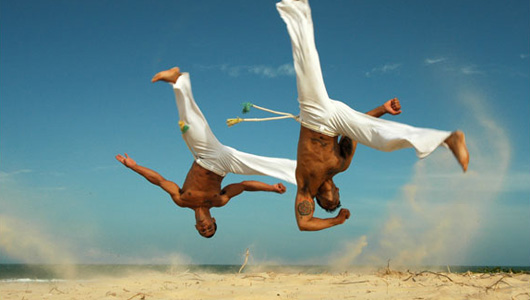Immerse yourself in the captivating universe of Capoeira, an Afro-Brazilian martial art form that fuses dance, acrobatics, and music. In this engaging read, we delve deep into the fascinating roots of Capoeira and its global reach, with particular emphasis on its influence in international schools. Prepare to embark on an exploratory journey that intertwines history, culture, and physical discipline, where the power of Capoeira unfolds.
In today’s globalized world, the importance of understanding and respecting cultural diversity cannot be overstated. And what better way to promote this than through the universal language of movement and rhythm that Capoeira embodies? Its robust presence in international schools across the globe provides an exciting platform for cultural exchange, fostering an enriching learning environment that extends beyond the classroom walls.
This write-up is set to shed light on the transformative impact of Capoeira in molding well-rounded, culturally aware individuals. By highlighting real-world examples of its successful integration into international curriculums, it becomes evident how Capoeira can serve as an effective tool for character development and the promotion of global citizenship. Buckle up, as we take you on this enriching ride, brimming with culture, rhythm, and movement.
The Origins of Capoeira
Capoeira is an Afro-Brazilian martial art that combines elements of dance, acrobatics, and music. It was developed in Brazil at the beginning of the 16th century. It is believed that the slaves brought to Brazil from Angola, Congo, and Mozambique contributed to the creation of this unique martial art.
The initial purpose of Capoeira was to provide a way for the enslaved to protect themselves and resist their oppressors. With time, it became a powerful tool for cultural expression, and eventually, it spread beyond the borders of Brazil.
Worldwide Recognition
In 2014, UNESCO recognized Capoeira as a cultural heritage of humanity, acknowledging its value and contribution to the world’s cultural diversity. This recognition not only increased the visibility of Capoeira internationally but also fostered the creation of many schools and organizations dedicated to teaching and promoting this martial art globally.
Capoeira’s Impact on International Schools
The implementation of Capoeira in international schools has become increasingly popular. Its multi-disciplinary nature makes it a comprehensive and versatile tool for holistic education.
Physical Education and Beyond
In physical education classes, Capoeira offers a unique approach to fitness. It improves strength, flexibility, coordination, and rhythm, providing a fun and engaging alternative to traditional sports.
Moreover, Capoeira’s elements of music and language offer opportunities for cross-curricular connections. Students learn Portuguese through songs and chants, increasing their linguistic competencies. They also learn to play traditional Capoeira instruments, enhancing their musical skills.
The Global Capoeira Community
The global Capoeira community is a testament to the martial art’s worldwide appeal. This community is comprised of countless Capoeira schools, organizations, and practitioners spread across various countries.

International Capoeira Events
Capoeira events such as workshops, competitions, and festivals are held worldwide, enabling practitioners from different parts of the world to connect, learn from each other, and celebrate this unique art form. These events also help in preserving and promoting the cultural heritage of Capoeira.
The Future of Capoeira in International Schools
Capoeira’s future in international schools looks promising. Its global popularity is likely to continue growing as more educators recognize its potential as a comprehensive tool for physical, cultural, and linguistic education.
Adopting Capoeira in Curriculum
The adoption of Capoeira in the curriculum can greatly enrich the learning experience. It encourages creativity, teamwork, and respect for cultural diversity. By integrating Capoeira into their curriculum, international schools can provide students with a unique learning experience that goes beyond traditional classroom boundaries.
Final Thoughts
Capoeira has come a long way from its origins in Brazil to its current position as a globally recognized martial art and cultural heritage. Its integration into international schools is indicative of its multifaceted nature and its potential as an educational tool. The future looks bright for Capoeira, and its impact on international education is set to deepen and expand.

Conclusion
In conclusion, the global impact of Capoeira, an Afro-Brazilian martial art with roots in the 16th century, has been profound, transcending borders and permeating international schools. This unique blend of dance, acrobatics, and music, born out of a desire for self-defense among slaves, has metamorphosed into a powerful cultural and educational tool. Its recognition by UNESCO as a cultural heritage of humanity in 2014 was a significant milestone that amplified its visibility and fostered the proliferation of Capoeira schools and organizations worldwide.
International schools have embraced Capoeira for its multidisciplinary nature, offering a comprehensive and versatile approach to holistic education. Its implementation transcends physical education, fostering linguistic competencies and musical skills among students. The growing adoption of Capoeira in curriculums globally attests to its potential to enrich learning experiences, foster creativity, and promote cultural diversity.
The robust global Capoeira community, coupled with the myriad of international Capoeira events, underscores the martial art’s global appeal and its role in preserving and promoting cultural heritage. Looking forward, the future of Capoeira in international schools is promising. It is poised to further deepen and expand its impact on international education, solidifying its position as a globally recognized martial art and cultural phenomenon.
